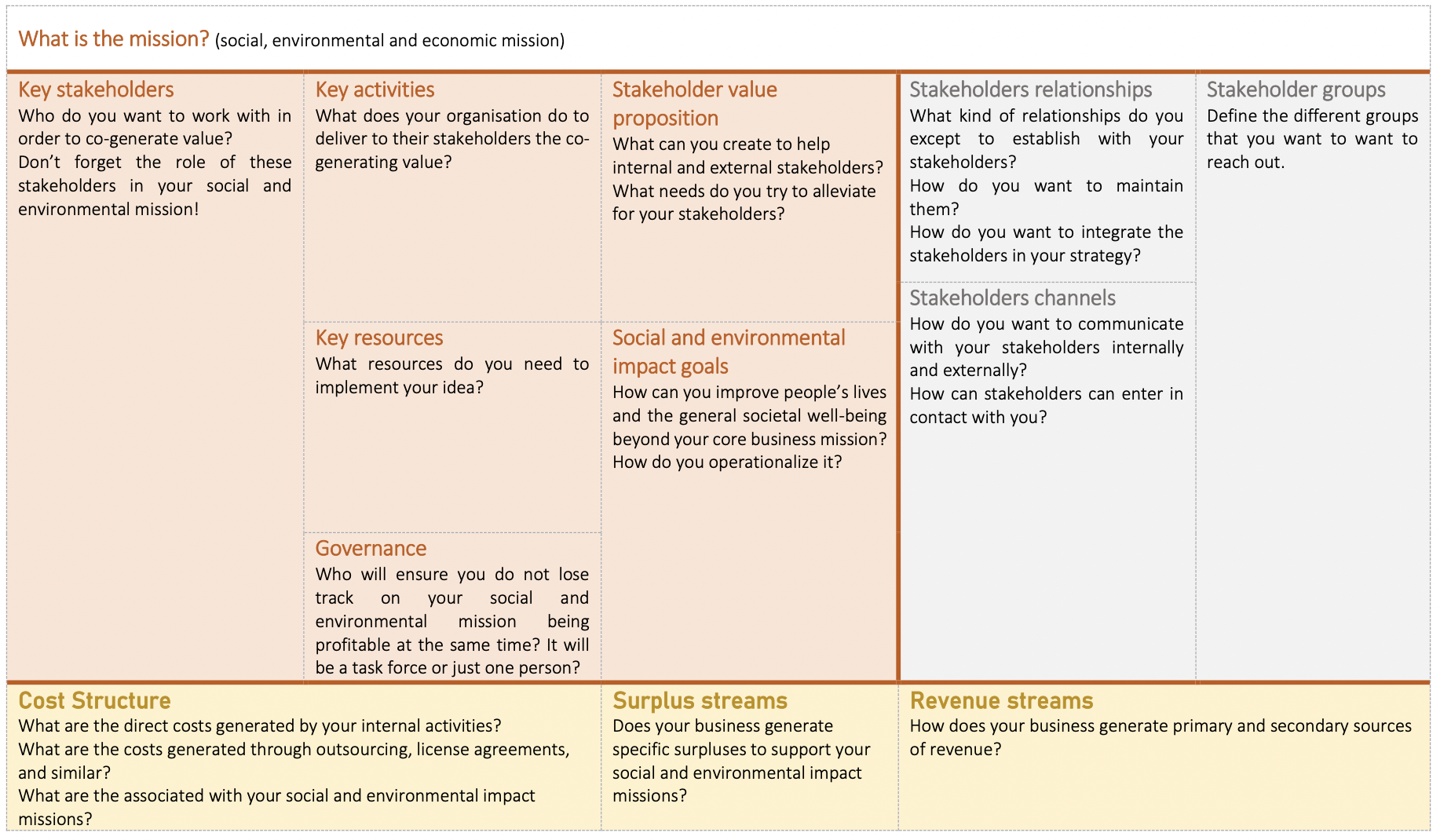In this lesson we present the two easy-to-follow tools for implementing CSE in organisations.
1) Tool 1: CSE canvas (available in the EMBRACE website – link)

Instructions for tool 1:
- Start populating the template by answering the questions on the CSE canvas
- Add more ideas as needed
- TIP: starting with a brainstorm can be very useful
2) Tool 2: the EMBRACE CSE self-assessment for organisations
The ‘EMBRACE CSE self-assessment for organisations’ presents a set of 27 CSE practices/initiatives by which the organisation marks the ones it is involved with or have already been involved. The EMBRACE self-assessment scale is then used in order to identify the CSE stage of the organisation at the moment it takes the self-assessment. The document is not presented here due to the size but can be accessed at the EMBRACE website (link).
Instructions for tool 2:
- In the CSEEMBRACE check-list, check each practice/initiative that the organization performs and write them down on the ‘Evidence’ space.
- Based on the number of practices/initiatives checked, identify the CSE stage the organization is located
- The organisation can review and implement the practices/initiatives that were not checked in order to progress with the CSE stage.
The self-assessment of organisations will enable a CSE Task Force to understand their organisation’s position in relation to CSE stages. The lower the score the closer the company is to social responsibility; on the other hand, the closer the score is to 10, the closer the company is to achieve a full and advanced CSE process.
References
Austin, J., & Reficco, E. (2009). Corporate Social Entrepreneurship. (Working paper 09- 101). Boston: Harvard Business School.Available online at http://www.hbs.edu/faculty/Publication%20Files/09-101.pdf
Elkington, J. (2008). Tripple Bottom Line. In W. Visser and D. Matten (Eds.). The A to Z of Corporate Social Responsibility (465-466). Sussex, England: John Wiley & Sons, Ltd.
Hemingway, C. A. (2013). Corporate social entrepreneurship: Integrity within. Cambridge University Press.
Iansen-Rogers, J. & Molenkamp, G. (2008). Non-financial report. In W. Visser and D. Matten (Eds.). The A to Z of Corporate Social Responsibility (337-339). Sussex, England: John Wiley & Sons, Ltd.
EMBRACE (2021a). Handbook for Corporate Social Entrepreneurs. Available at http://csembrace.eu/wp-content/uploads/2021/06/D8-website-version_09.pdf.
EMBRACE (2021b). The journey from CSR to CSR. Available at http://csembrace.eu/check-out-our-newly-developed-cse-infographic/.
EMBRACE (2022). Corporate Social Entrepreneurship. Available at http://csembrace.eu.
Porter, M.E., & Kramer, M.R. (2011). Creating Shared Value. Harvard Business Review, 1-17.
Schwab, K., (2008). Global corporate citizenship: working with governments and society, Foreign Affairs, 87(1), 107-118.
Tasavori, M. (2012). “Corporate Social Entrepreneurship at the Bottom of the Economic Pyramid:Antecedents and Outcomes in India”, Doctoral thesis, The University of Manchester, UK.